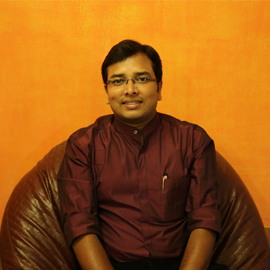What the Bilkis Bano case means for justice in post-Godhra riots cases

How much bloodlust would it take for someone to snatch a three-and-a-half-year-old girl from her mother and smash her head on the ground? How strong a combination of lust and depravity would it take for that killer's associates to rape the child's pregnant mother?
How big an absence of the fear of law would it take for their other accomplices to then rape and kill over a dozen other members of the family?
The law doesn't ask questions like these, but if we look for their answers we might come a bit closer to understand the organised criminality behind the post-Godhra riots of 2002.
The disturbing event
This is the story of Bilkis Bano, raped and left for dead on 3 March, 2002 near a broken road in Chapparwad village in Gujarat's Dahod district. When this happened, Bilkis and 16 of her relatives were hiding, dressed as adivasis, from rioters who were already on the rampage back home in their own village.
The camouflage proved to be of no help because some of the rioters were from the same village as Bilkis and recognised her. The fact they were fellow villagers also did not deter the rioters from proceeding with their brutality.
Justice is served
The Bombay High Court has reaffirmed people's faith in the country's judicial system by upholding the life sentence awarded to these brutes 9 years ago by a trial court.
Not just that, the court has also improved upon the trial court's verdict by setting aside the acquittal of five of the accused, including Gujarat police officers and government doctors.
This makes the Bilkis Bano case a rare one among about 2,000 cases of post-Godhra violence in which the wheels of justice have turned slowly but have grinded just fine. It is among the nearly 1,600 cases which were re-opened and reinvestigated thanks to a Supreme Court order, and had the culprits nailed.
Apart from the brutality behind the crimes, what the case will also be remembered for a long time is for how the various cogs in the system moved in conjunction to ensure justice prevails. The Gujarat police had initially dismissed the case and done its best to dilute it as much as possible. It was only when Bano approached the National Human Rights Commission and the Supreme Court, that a CBI-probe was ordered.
The high point of the case was when a team of experts from the Central Forensic Science Laboratory (CFSL) Delhi and All India Institute of Medical Sciences (AIIMS), appointed by the CBI, exhumed mass graves in Ahmedabad to establish the identity and cause of death of the victims. The team dug at random suspect locations for three days before discovering the first forearm bone of a dead body. The exhumation and examination went on for four more days.
The trial was transferred out of Gujarat, to Mumbai, and the CBI, inspite of fumbling initially, did a thorough job of charge-sheeting and nailing the accused. It was the CBI that, remarkably, argued for nothing less than death penalty for the accused, calling it a fit example of the “rarest of rare” category. The High Court has rejected that contention. The accused are quite likely to appeal against the sentence in the Supreme Court, and that will be another story to track. But it doesn't take away anything from the significance of the case so far.
Many languishing cases
Unlike the Bilkis Bano case, many other post-Godhra riots cases have languished because of deliberately tardy probes by the police and the CBI. Allegations were also levelled against the man who is India's Prime Minister today and his deputy, the present chief of his party.
Even the role of the SC-monitored Special Investigation Team has been controversial because of the clean chit to the powerful accused, in spite of several witnesses against them. One of their names still keeps coming up during hearings in the cases that are still on, where accused keep demanding his examination as witness.
The entire post-Godhra violence is one narrative, even if it comprises many individual cases. As the courts firmly establish criminality in many of these case and hold the guilty to book, it must be remembered that the entire violence was planned, orchestrated and executed by one network whose powers-that-be have been subsequently found to be even beyond the reach of law.
First published: 4 May 2017, 17:48 IST

